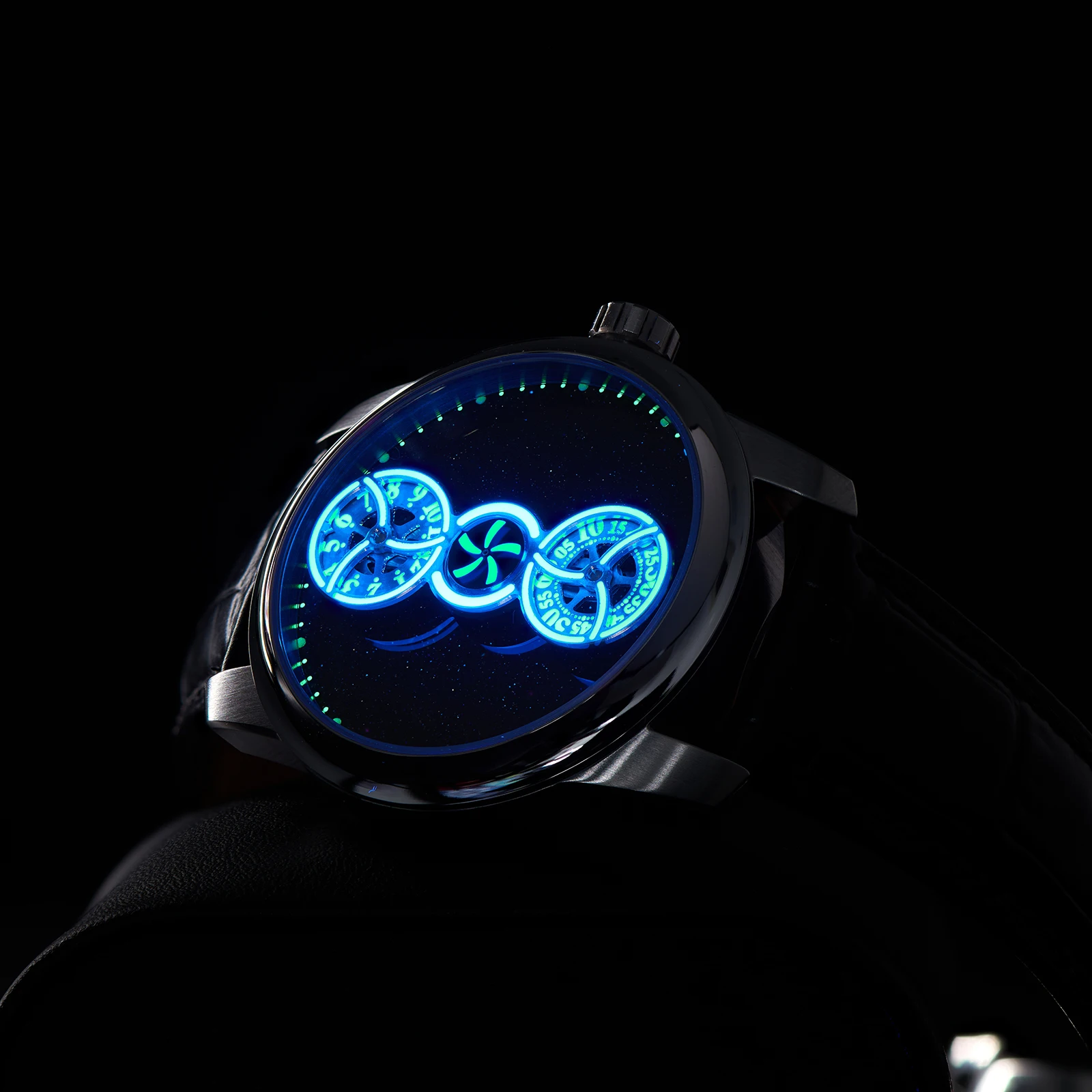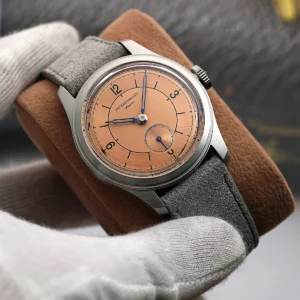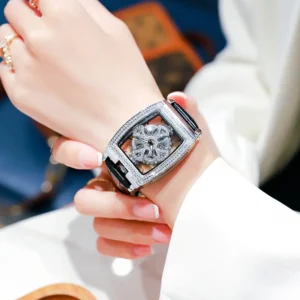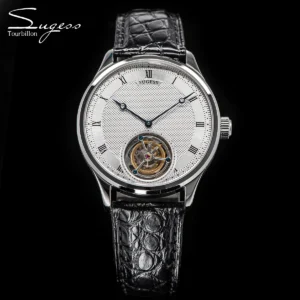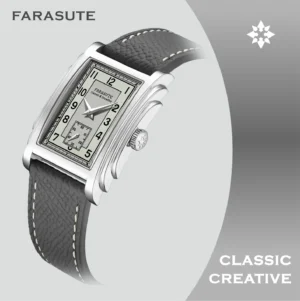For centuries, the chronograph has been an essential tool in timekeeping history, allowing users to measure elapsed time while simultaneously displaying the current time. This sophisticated mechanism represents one of watchmaking’s greatest achievements, combining precision engineering with practical functionality. But behind this remarkable invention lies a fascinating historical mystery: who truly deserves the title “Father of the Chronograph”?
For many years, the horological world credited Nicolas Mathieu Rieussec with inventing the chronograph in 1821. However, recent discoveries have dramatically changed our understanding of chronograph history. This revelation has sparked renewed interest in the origins of this important complication and raised questions about proper historical attribution.
In this article, we’ll explore the compelling evidence regarding Louis Moinet and Nicolas Mathieu Rieussec—two brilliant watchmakers whose contributions shaped the development of the chronograph. The history of timepiece engineering reveals many such stories where proper credit was delayed by historical oversight. By examining both inventors’ work, we’ll uncover who truly deserves recognition as the original creator of this revolutionary timekeeping device.
The True Pioneer: Louis Moinet and the “Compteur de Tierces”
Louis Moinet (1768-1853) was an accomplished French horologist, astronomer, and artist whose contributions to watchmaking were vastly underappreciated until recently. A contemporary of Abraham-Louis Breguet, Moinet was already well-respected as a scholar and watchmaker during his lifetime, serving as president of the Paris Chronometry Society and creating timepieces for prestigious figures including Thomas Jefferson and Napoleon Bonaparte.
In 1816, Moinet created an exceptional timing device he called the “Compteur de Tierces” (counter of thirds). What makes this instrument remarkable is that it was specifically designed for astronomical observations and contained all the essential elements of what we now recognize as a chronograph. The device featured start, stop, and reset functions—the defining characteristics of chronograph functionality.
Most impressively, Moinet’s creation operated at an astonishing frequency of 216,000 vibrations per hour (30 Hz), allowing it to measure time intervals with remarkable precision down to 1/60th of a second. This high frequency wouldn’t be matched in watchmaking for over a century, demonstrating how far ahead of his time Moinet truly was.
The intricacies of chronograph watchmaking were already evident in this early invention. Moinet’s compteur featured two separate trains—one for timekeeping and another for the chronograph function—connected through a clutch mechanism, establishing the foundation for modern chronograph design.
Unfortunately, Moinet never commercially produced or widely publicized his invention. It remained largely unknown until its rediscovery nearly two centuries later, causing history to temporarily forget his groundbreaking achievement.
Today’s watch enthusiasts can appreciate modern interpretations of this technology through various automatic chronograph watches that build upon Moinet’s pioneering work.
The Original “Chronograph”: Rieussec’s Contribution to Timekeeping
Nicolas Mathieu Rieussec (1781-1866) was a Parisian watchmaker who created what was long considered the first chronograph. In 1821, at the request of King Louis XVIII of France, Rieussec developed a timing device specifically to measure the duration of horse races at the Champ de Mars in Paris.
Rieussec’s invention was ingenious in its own right. Unlike Moinet’s device which used hands and subdials, Rieussec’s timing mechanism used a fixed pen to mark a rotating enamel dial with a small dot of ink when activated at the start and end of a timed event. This distinctive ink-marking system gave rise to the name “chronograph”—derived from the Greek words “chronos” (time) and “graphein” (to write).
The king’s interest in accurately timing horse races had significant practical implications. Horse racing was enormously popular among the aristocracy, and precise timing provided a way to settle disputes about race outcomes and evaluate the performance of different horses objectively.
Rieussec received a patent for his invention in 1822, which helped cement his place in history as the chronograph’s creator. His timing device gained commercial success and public recognition, becoming the reference point for future timing mechanisms.
The timeline of horological innovations shows that Rieussec’s contribution was particularly important because it brought the concept of time measurement to a broader audience and established the terminology we still use today. While not technically the first chronograph as we now know, Rieussec deserves substantial credit for popularizing the technology and creating the first commercially successful timing instrument bearing the name “chronograph.”
Technical Comparison: Moinet vs. Rieussec Inventions
When examining both inventors’ contributions objectively, several key differences become apparent. Moinet’s “Compteur de Tierces” represented the more technically advanced solution, functioning much like modern chronographs with hands that could be started, stopped, and reset. It offered exceptional precision at 1/60th of a second and operated at a remarkable 216,000 vibrations per hour—a technical achievement far ahead of its time.
In contrast, Rieussec’s device worked on a fundamentally different principle. Rather than continuously moving hands, it marked time intervals by depositing ink dots on rotating enamel dials—hence the term “chronograph” or time writer. While ingenious, this approach was less precise than Moinet’s solution and represented a different mechanical approach to time measurement.
The intended purposes also differed significantly. Moinet created his instrument for astronomical observations, requiring extreme precision for scientific purposes. Rieussec’s chronograph, designed for timing horse races, needed to be practical and readable in public settings but required less precision.
Many manual wind watches today still incorporate design elements that can be traced back to these early innovations, particularly in how they engage and disengage timing mechanisms.
From a purely chronological and technical standpoint, Moinet’s invention came five years earlier and contained more elements that define modern chronographs. However, Rieussec’s creation held significant historical importance for being the first to be called a chronograph and the first to achieve commercial success and public recognition.
Historical Recognition: Why Rieussec Was Long Considered the Inventor
For nearly two centuries, horological history recognized Nicolas Mathieu Rieussec as the inventor of the chronograph. This historical attribution occurred for several compelling reasons that shed light on how technological innovations are sometimes credited.
First, Rieussec’s invention received official documentation through his 1822 patent, creating a clear historical record that scholars could reference. By contrast, Moinet’s invention remained privately created without formal patent protection or widespread documentation.
Second, Rieussec enjoyed royal patronage from King Louis XVIII, which provided both funding and public visibility for his invention. The association with horse racing—a popular aristocratic pastime—ensured that his timing device received attention from influential members of society.
Third, Rieussec actually coined the term “chronograph,” which became permanently associated with this class of timing instruments. By naming the category, he effectively placed his stamp on the technology in a way that persisted through centuries.
The evolution of timekeeping technology shows many examples where commercial success, rather than chronological primacy, determines how history remembers innovations. In Rieussec’s case, his chronograph saw practical application and commercial production, while Moinet’s remained largely unknown outside a small circle of associates.
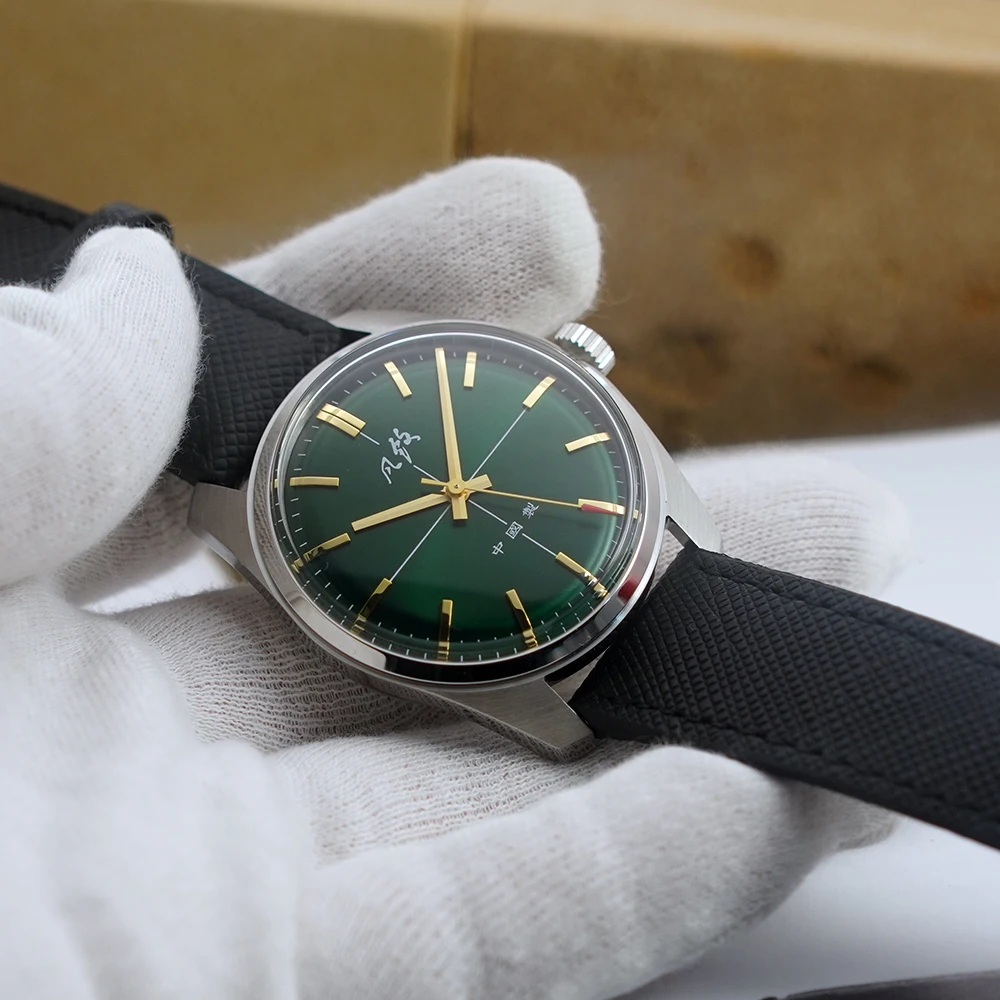
The Rediscovery: How Moinet’s Achievement Came to Light
The horological world experienced a seismic shift in understanding when Louis Moinet’s “Compteur de Tierces” was rediscovered around 2012. This remarkable find occurred when a previously unknown timing instrument appeared at an auction, described simply as an unusual pocket chronograph.
After the auction, extensive research and authentication began. Experts carefully examined the mechanism, construction techniques, materials, and historical documentation. Multiple independent horological specialists confirmed the device’s authenticity and dated its creation to 1816 based on watchmaking techniques, materials, and documentation from Moinet’s own records.
The authentication process revealed several remarkable facts. The mechanism contained all the essential elements of a modern chronograph, operated at an astonishing frequency for its time, and predated Rieussec’s invention by five years. Most importantly, documentation connected to Moinet himself confirmed he had created this “compteur” specifically for astronomical observations.
The Guinness Book of World Records officially recognized Moinet’s invention as the first chronograph in history, amending the historical record. This discovery sent ripples through the watchmaking community, prompting museums, historians, and collectors to reassess chronograph history.
Today’s chronograph pilot watches owe much to these early innovations, building upon the foundations established by pioneers like Moinet.
Key Advancements After the First Chronographs
Following the groundbreaking work of Moinet and Rieussec, the chronograph underwent numerous significant improvements that transformed it into the sophisticated instrument we know today.
In 1844, Adolphe Nicole made one of the most important contributions to chronograph evolution by developing the reset feature. This innovation allowed the chronograph hand to return to zero, enabling consecutive timing operations without needing to wait for a complete revolution of the timing hand.
As the 19th century progressed, chronographs transitioned from specialized scientific instruments and horse racing tools to more practical everyday timepieces. The migration from pocket watches to wristwatches in the early 20th century further transformed the chronograph’s utility and popularity.
Breitling made significant advancements in the 1915-1923 period by developing the first chronograph wristwatch with a separate pusher for controlling the timing functions. This improvement allowed for more intuitive operation and laid the groundwork for future chronograph design.
Perhaps the most significant milestone after the initial invention came in 1969 when the first automatic chronograph movements were introduced. This development resulted from intense competition between several collaborations: the Chronomatic Group (including Breitling, Heuer, and Hamilton), Zenith with their El Primero movement, and Seiko in Japan. These automatic chronographs eliminated the need for manual winding, making chronographs more convenient for everyday use.
Modern advancements have included the development of column wheel mechanisms for smoother operation, vertical clutches for improved precision, and silicon components for greater durability and resistance to magnetic fields.
The understanding of chronograph characteristics continues to evolve as watchmakers build upon this rich legacy of innovation that began with Moinet and Rieussec.
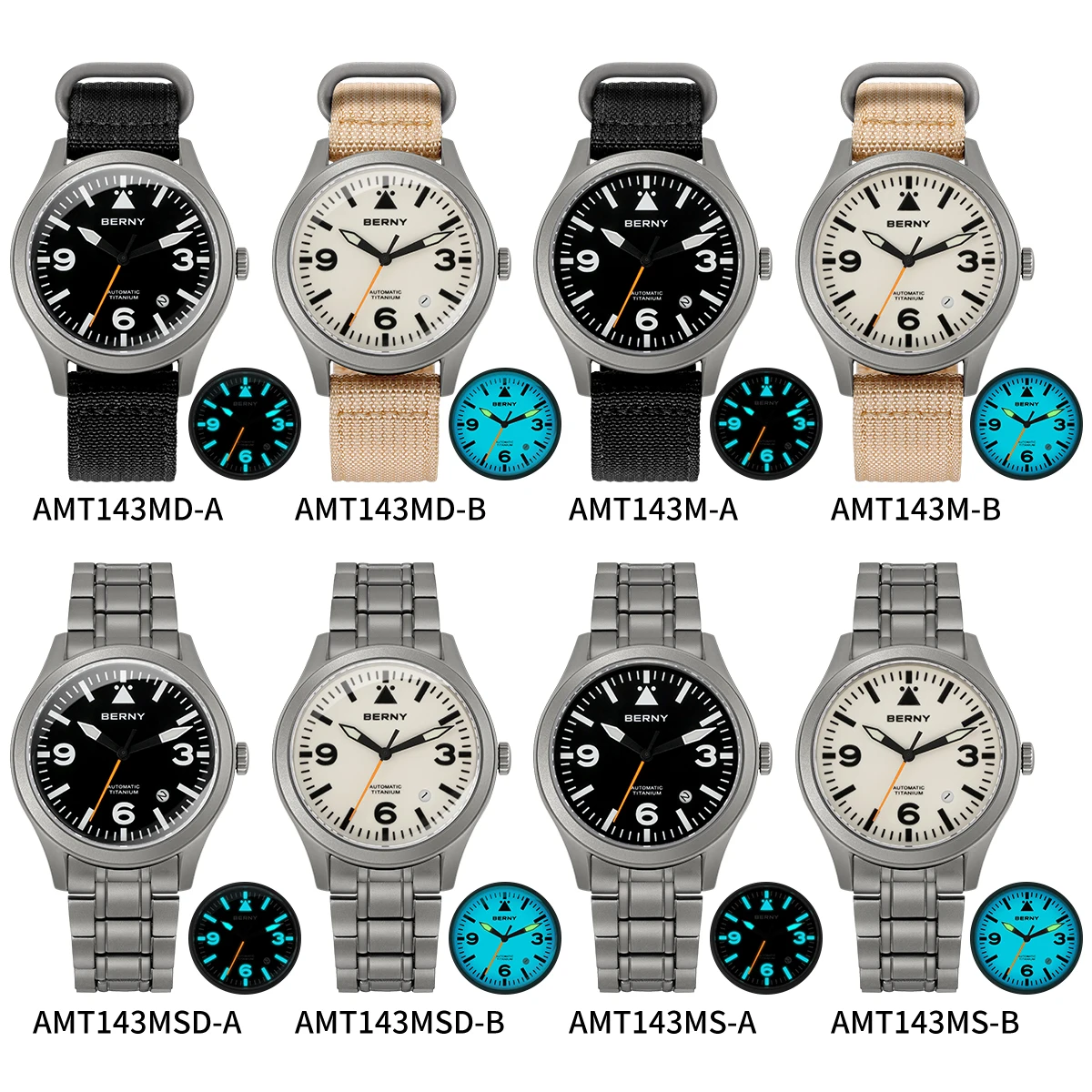
Why Does Attributing the “Father of the Chronograph” Matter?
Proper historical attribution in horological history goes beyond mere academic interest—it reflects our commitment to acknowledging true innovation and giving credit where it’s genuinely due. By recognizing Louis Moinet’s earlier and technically superior invention, we honor the principle that historical accuracy matters, even when that recognition comes centuries later.
Correct attribution also helps us better understand the actual path of technical development in watchmaking. Recognizing Moinet’s high-frequency mechanism provides insight into how advanced early 19th-century horology truly was and shows that some “modern” innovations had precedents much earlier than commonly thought.
For today’s watch brands and collectors, this historical recognition creates a richer narrative around chronograph development. Many contemporary watchmakers draw inspiration from these early innovations, incorporating design elements and technical approaches from both Moinet and Rieussec.
Perhaps most importantly, the correction of this historical record reminds us that innovation doesn’t always receive immediate recognition. Many classic manual wind watches continue traditions established by these early pioneers, whose contributions we can now appreciate more fully thanks to historical research.
How to Identify an Early Chronograph Watch
For collectors and enthusiasts interested in historical timepieces, identifying early chronographs requires understanding several key characteristics that distinguish them from regular watches:
Early chronographs typically feature:
– Subdials (usually two or three) for recording elapsed minutes and hours
– Push buttons (or “pushers”) extending from the case at the 2 and 4 o’clock positions
– Column wheels or cam systems visible when examining the movement
– Thicker cases than non-chronograph watches to accommodate the additional mechanism
– Scales around the dial perimeter, often including a tachymeter for calculating speed
In very early examples, you might find monopusher designs where a single button controls start, stop, and reset functions in sequence. These were common before the separate-function pusher design became standard.
Materials in early chronographs typically included brass plates and bridges, steel screws and levers, and ruby or sapphire jewels at wear points. Cases were commonly made from gold, silver, or steel, with enamel or metal dials featuring printed or applied numerals.
The differences between manual and automatic chronographs also provide clues to a timepiece’s age, as automatic chronographs didn’t appear until 1969, making any self-winding chronograph relatively modern in horological terms.
Automatic Chronograph Watches, Chronograph Pilot Watches
Price range: $233.36 through $237.58 Select options This product has multiple variants. The options may be chosen on the product pageAutomatic Chronograph Watches, Classic Style Dive Watches
$3,053.06 Select options This product has multiple variants. The options may be chosen on the product pageClassic Manual Wind Watches, Manual Wind Dress Watches
Price range: $425.50 through $462.50 Select options This product has multiple variants. The options may be chosen on the product page- $104.12 Select options This product has multiple variants. The options may be chosen on the product page
Automatic Skeleton Watches, Classic Manual Wind Watches, Manual Wind Dress Watches, Mechanical Skeleton Watches
$1,944.80 Select options This product has multiple variants. The options may be chosen on the product pageClassic Manual Wind Watches, Manual Wind Dress Watches, Square & Rectangular Automatic Watches
$884.95 Select options This product has multiple variants. The options may be chosen on the product page
Collecting Early Chronograph Timepieces
Collecting historically significant chronographs connects enthusiasts directly with the rich heritage of precision timekeeping. Early chronograph watches represent important milestones in horological innovation and often carry stories that transcend their mechanical function.
What makes vintage chronographs particularly valuable is their combination of technical complexity, historical significance, and relative rarity. Unlike standard timepieces, chronographs were produced in smaller numbers due to their specialized nature and more complex manufacturing requirements.
When evaluating early chronographs, collectors should consider several factors. Original condition is paramount—unpolished cases, original dials without restoration, and complete, unmodified movements command premium prices. Provenance also plays a crucial role, with documented history adding significant value and authenticity assurance.
Important early examples include pocket chronographs from the mid-19th century, early wrist chronographs from the 1910s and 1920s, and specialized applications like military chronographs and doctor’s pulsometer watches. These pieces often appear at prestigious auctions and can command prices from tens of thousands to millions of dollars for the rarest examples.
The collecting community particularly values chronographs that demonstrate technical innovations or historical firsts, making them not just timekeeping tools but tangible connections to watchmaking history.
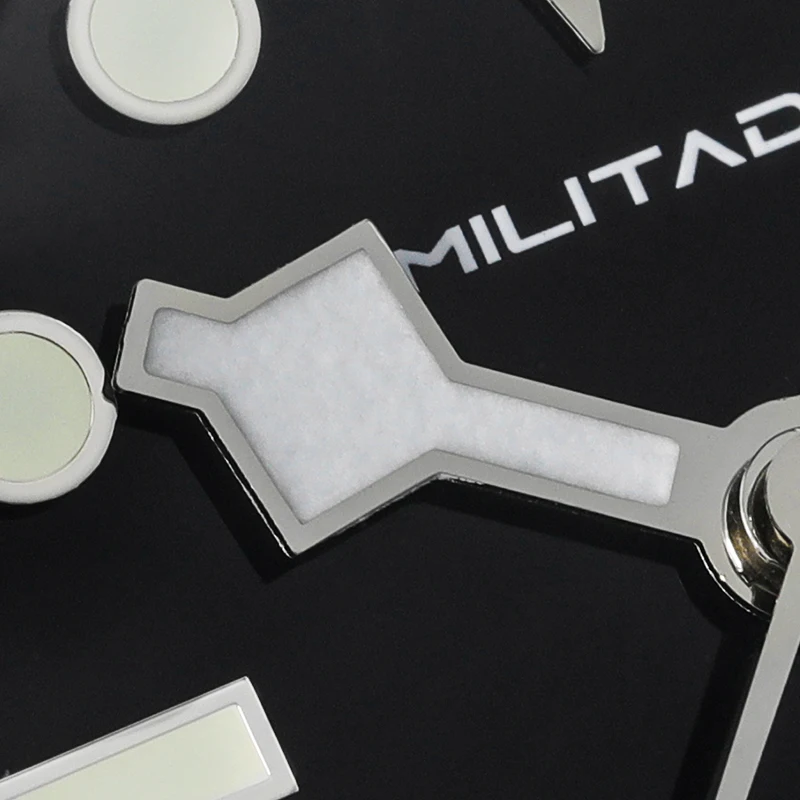
Is Louis Moinet Recognized in Modern Watchmaking?
Since the rediscovery of his groundbreaking chronograph, Louis Moinet’s legacy has experienced a remarkable revival in contemporary watchmaking. His contributions are now widely acknowledged by major horological institutions, including the Federation of the Swiss Watch Industry and numerous watch museums worldwide.
The modern brand bearing his name, Ateliers Louis Moinet, was established to honor his legacy and continues to create timepieces inspired by his innovative spirit. These watches often incorporate high-frequency movements and astronomical complications that pay homage to Moinet’s original interests and expertise.
Moinet’s design principles, particularly his focus on precision and astronomical applications, continue to influence modern chronograph development. The exceptionally high frequency of his original chronograph—216,000 vibrations per hour—foreshadowed modern high-beat movements that aim to achieve greater timing accuracy.
Perhaps most significantly, the proper historical recognition of Moinet has prompted the watch industry to reexamine other aspects of horological history, ensuring that innovation receives appropriate credit regardless of when that recognition comes. This represents an important shift toward historical accuracy in an industry that deeply values its heritage and traditions.
The enduring legacy of chronograph complications demonstrates how Moinet’s early innovations continue to influence watchmaking centuries after their creation, showing the timeless nature of truly groundbreaking horological achievements.

